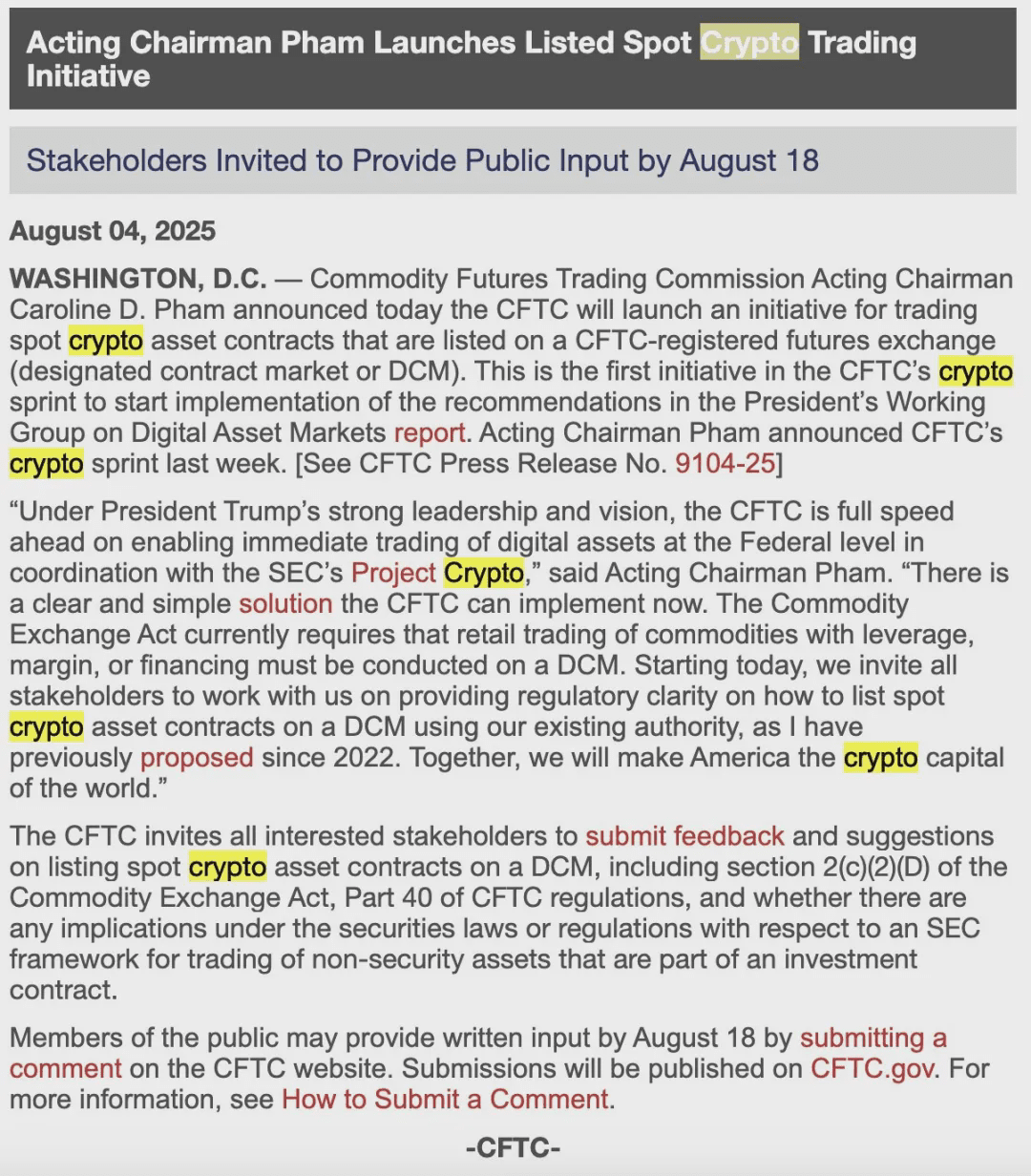On the global digital asset competition map, two seemingly distinct and powerful forces are simultaneously unfolding. One side is the world's financial superpower, the United States, whose regulatory agency is launching a reform plan called 'Crypto Sprint' with unprecedented determination and speed, aiming to establish clear federal-level rules for the chaotic market. On the other side is the 'sleeping giant' India from the East, where a shocking set of data shows that despite facing harsh tax policies, its public's accumulated Bitcoin holdings have quietly risen to the second largest in the world, second only to the United States.
These two major news items extend like two parallel lines on the world's crypto map but point to a core issue: in this competition for future financial dominance, will the United States' top-down 'policy first' model consolidate its hegemonic position, or will India's bottom-up 'public enthusiasm', if policy constraints are lifted, have the opportunity for an astonishing 'curve overtaking'?
America's 'Crypto Sprint'
For a long time, U.S. cryptocurrency regulation has been in a state of ambiguity between the SEC (Securities and Exchange Commission) and the CFTC (Commodity Futures Trading Commission), akin to a multi-horse carriage. However, this situation is being rapidly broken. Following the SEC's high-profile launch of the 'Project Crypto' reform blueprint, the CFTC has quickly followed suit, officially launching its 'Crypto Sprint' plan on August 5, 2025.

The CFTC announced that it is considering allowing its registered futures exchanges (DCMs) to directly list trading of Bitcoin, Ethereum, and other 'crypto asset spot contracts'. This move seems like just a technical regulatory adjustment, but it has far-reaching significance.
According to current regulations, the CFTC's main jurisdiction focuses on derivatives such as futures and options, while its regulatory power over the spot market for assets like Bitcoin, which are deemed 'commodities', is relatively limited, unless fraud or market manipulation is involved. If this plan can be implemented, it means that the United States will create a unified, transparent, and strictly regulated market structure for cryptocurrency spot and futures trading at the federal level for the first time.
CFTC Acting Chair Caroline Pham showed great determination in her statement, indicating that the CFTC does not intend to passively wait for Congress to complete legislation but chooses to proactively deploy and accelerate regulatory pace within its existing legal framework. She stated: 'Under the strong leadership and vision of President Trump, the CFTC is pushing forward at full speed to allow digital assets to be traded immediately at the federal level. We will invite all stakeholders to provide feedback to help us clarify how to list crypto asset spot contracts on DCM under existing authorities.'
The 'Crypto Sprint' plan is a concrete action initiated by the CFTC to implement the recommendations of the White House 'Presidential Task Force on Digital Assets Market' report, aiming to synchronize with the SEC's 'Project Crypto' strategy to jointly build a globally leading digital financial market for the United States. To this end, the CFTC has simultaneously launched a public consultation process, inviting the market to provide feedback on contract design, risk control, and coordination with the SEC's regulatory framework.
India's 'Civil Whale'

While U.S. regulators are aggressively implementing top-level designs, data from the market reveals another significant force in the crypto world. Statistics show that the number of Bitcoins held by the public in India has reached an astonishing approximately 1 million, with a total value of between 115 billion to 120 billion dollars, surpassing traditional economies like China and Europe to become the second largest holder of Bitcoin globally. This shocking data is not only in its vast quantity but also in the holding structure and policy background behind it.
With approximately 7.8 million Bitcoins held, the United States, ranked first globally, includes assets from publicly traded companies like MicroStrategy, Bitcoin spot ETFs, and assets seized by government enforcement agencies, showing a strong institutional character. In contrast, India's million Bitcoins are almost entirely driven by a large number of retail investors (individuals). Reports indicate that India has over 119 million cryptocurrency users, ranking among the highest globally, characterized by a broad, long-term, and small-value holder base.
Even more incredible is that this bottom-up adoption wave has occurred under extremely harsh policy resistance. Currently, the Indian government imposes a capital gains tax of up to 30% on cryptocurrency profits and a 1% Tax Deducted at Source (TDS) on each transaction. These punitive tax policies greatly suppress high-frequency trading and short-term speculation but have failed to dampen the enthusiasm of the Indian public viewing Bitcoin as a long-term store of value.
Experts analyze that India's young population structure, extremely high smartphone penetration, and continuously improving financial literacy are the main driving forces behind this wave. Under the relative weakness of its national currency (the Rupee) and inflationary pressures, more and more Indians view Bitcoin as 'digital gold' to combat macroeconomic risks.
Sumit Gupta, co-founder of Indian cryptocurrency exchange Coin DCX, commented: 'Even in the face of policy restrictions, Indian users are still buying and holding a significant amount of Bitcoin. We just need friendlier policies, reasonable taxes, and clearer regulatory frameworks, and India is likely to become the world leader in Bitcoin holdings!'
The race between policy and public enthusiasm

Observing the American 'Crypto Sprint' alongside India's 'Civil Whale' presents a vivid picture of a global crypto competition filled with tension. This is a typical contest between 'top-level design' and 'grassroots rise'.
U.S. Model: Policy-driven, system-first. The United States is trying to leverage its strong financial regulatory capabilities to establish a clear, robust, and institution-friendly rule system. Its goal is to attract the vast capital of Wall Street and global innovative enterprises into its regulatory 'fence', thereby consolidating its central position in the global financial system.
Indian Model: Public-driven, immense potential. India showcases another possibility, where its large population base and strong grassroots demand create a huge and potential-filled market. This force is currently suppressed by policy, but it is like a dormant volcano; once the policy environment improves, the energy it releases will be immeasurable.
The final outcome of this competition will depend on one key variable: the speed of the combination between policy and public enthusiasm. The advantage of the United States lies in the certainty of its policy execution and its ability to attract global capital, but its public adoption rate and breadth may not be as extensive as India's. India's advantage lies in its unparalleled user base and potential market size, but its greatest uncertainty lies precisely in its fluctuating policy outlook.
The world is holding its breath, watching the next steps of these two countries. The U.S. 'Crypto Sprint' has already been initiated, a scheme aimed at defining the future with rules and order. Meanwhile, India's million Bitcoin holders represent a powerful grassroots force that cannot be ignored. The leaders of the crypto world in the next decade may not only depend on who can establish the most comprehensive rules but also on who can most effectively combine the national policy vision with the digital survival needs of billions of people. This race has just begun.

